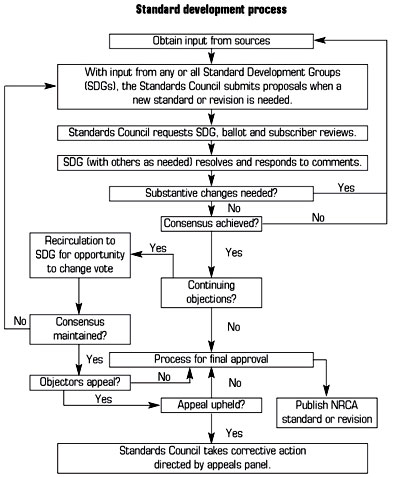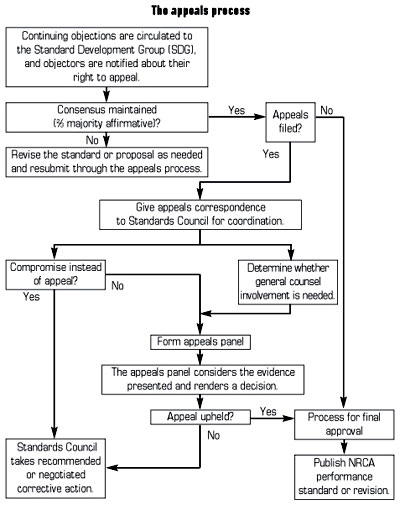To many roofing professionals, it seems as if the roofing industry is overrun with standards that have been created for materials and design. However, no existing standard addresses constructed roof system performance.
NRCA wants to change this. NRCA believes roof system performance should be evaluated by addressing design, materials, installation and maintenance. These factors are critical to constructed roof systems' long-term performances.
As a result, NRCA is facilitating the creation of performance standards for constructed roof systems (PSCRS) and spearheading the initiative because it ties in with NRCA's mission to recognize time-tested, proven roofing practices.
Former NRCA President Steve Kruger, president of L.E. Schwartz & Son Inc., Macon, Ga., is a member of the team developing PSCRS. He says: "NRCA often has been the catalyst for positive change in the roofing industry. I view PSCRS as setting the bar for identifying roof systems that give all involved the best opportunity for long-term success."
Typically, the long-term performances of constructed roof systems are measured by their waterproofing abilities. PSCRS will enhance and build on existing design and materials standards and include criteria for installation and maintenance.
PSCRS will expand on standards of Underwriters Laboratories Inc., American National Standards Institute, ASTM International, FM Global Research and other groups, as well as The NRCA Roofing and Waterproofing Manual, Fifth Edition. The standards also will include roof system maintenance guidelines from the Manual for Inspection and Maintenance of Built-Up and Modified Bitumen Roof Systems: A Guide for Building Owners; Manual for Inspection and Maintenance of Sprayed Polyurethane Foam-based Roof Systems: A Guide For Building Owners; SPRI/NRCA Manual of Roof Inspection, Maintenance, and Emergency Repair for Existing Single-ply Roofing Systems; and other manuals.
The council
To create performance guidelines, NRCA is instituting a consensus process similar to processes used by other trade groups, such as the National Fire Protection Association; Sheet Metal and Air Conditioning Contractors' Association; and American Society of Heating, Refrigerating and Air-Conditioning Engineers. NRCA's Technical Operations Committee will oversee the process, and the Standards Council is responsible for implementing the consensus process.

The flowchart shows how NRCA's performance standards for constructed roof systems will be created.
The Standards Council, which was formed in February, consists of roofing contractors, manufacturers, suppliers and other interested parties. The council is responsible for the administration, development and maintenance of PSCRS.
Council members include Dave Bailey, principal investigator for the U.S. Army Engineer Research and Development Center/Construction Engineering Research Laboratories, Champaign, Ill.; Rene Dupuis, president of Structural Research Inc., Middleton, Wis.; Conrad Kawulok, president of B & M Roofing of Colorado Inc., Boulder; Kruger; Frank Lawson Jr., president of The Lawson Roofing Co. Inc., San Francisco; Jim Mollenhoff, vice president and national sales manager of Siplast/Icopal, Irving, Texas; and Brad Segal, president of Bradco Supply Corp., Avenel, N.J.
The council has met once and held one conference call to develop Guidelines for the Development of Performance Standards for Constructed Roof Systems and White Paper for Performance Standards for Constructed Roof Systems. The council plans to meet again this month.
Later this year, the council will appoint Standard Development Groups (SDGs) for each roof system type that will have a performance standard developed. For example, SDGs may be formed for metal, tile, built-up and other roof system types.
SDGs will consist of at least seven members from the manufacturing, supply, contracting, consulting and building owner communities. SDG members will serve for the duration of a standard's development, receive annual reviews by the Standards Council and be examined for active participation. SDG members will research and prepare draft performance standards, which will be subjected to public comments via a ballot process. (See the flowcharts to learn how PSCRS will be created and how the appeals process will work.)

The flowchart depicts the process for submitting and resolving appeals of NRCA's performance standards for constructed roof systems.
SDGs are expected to begin work this fall. The council currently does not know which roof system type SDGs will address first. The council expects the first standard will address a roof system type that has been used throughout North America for a long time period.
Newer roof system types will not receive PSCRS because they do not have performance histories. An appropriate time period for testing newer roof system types is yet to be determined. Roof system types that are not supported by the roofing industry or deemed reliable or do not have predictive performance testing or evaluation procedures will not receive PSCRS.
The first performance standard won't be published for at least two years. Once a standard is developed, it will be updated every three years. The council plans to develop about 10 PSCRS during the next 10 years.
"SDGs will need to have analysis and feedback components in place, and that takes time," Kruger explains. "Potential for appeal to the Standards Council could extend things further."
What to expect
NRCA does not intend PSCRS to be mandatory. In fact, the association is aware that some roofing professionals and building owners may not want to adhere to PSCRS.
For example, manufacturers may be concerned performance standards will force them to make costly changes to their current products or plants.
But NRCA believes many materials will need few—if any—changes to meet PSCRS requirements.
Kruger notes, "If a manufacturer decides product changes are appropriate after reviewing a standard and [why] it was established, [the changes] may be better for all stakeholders."
And manufacturers will not have to undergo additional inspections to comply with PSCRS—their plants and products will be inspected to comply with current standards that will be included in PSCRS.
Roofing contractors also should not expect vast changes to installation practices. But contractors wanting to install roof systems according to PSCRS will have to follow the standards' quality-assurance guidelines during roof system installation and maintenance.
PSCRS will be useful for building owners, as well.
"Conceptually, the idea of addressing all aspects of the process—from design and materials through application and maintenance—would be valuable to those owners who are concerned about their roofs," Mollenhoff explains. "The key is the criteria must be developed in a way that will improve the industry to benefit all participants."
NRCA believes the initiative to create PSCRS will answer the following questions many roofing professionals have: What do the standards represent?; How were the standards created?; and Why does the roofing industry have so many standards?
Professional Roofing will keep you informed about PSCRS. Contact NRCA's Technical Services Section at (847) 299-9070 if you have questions, would like to be involved in the process or would like copies of PSCRS documents.
Kate Gawlik is associate editor of Professional Roofing magazine.

